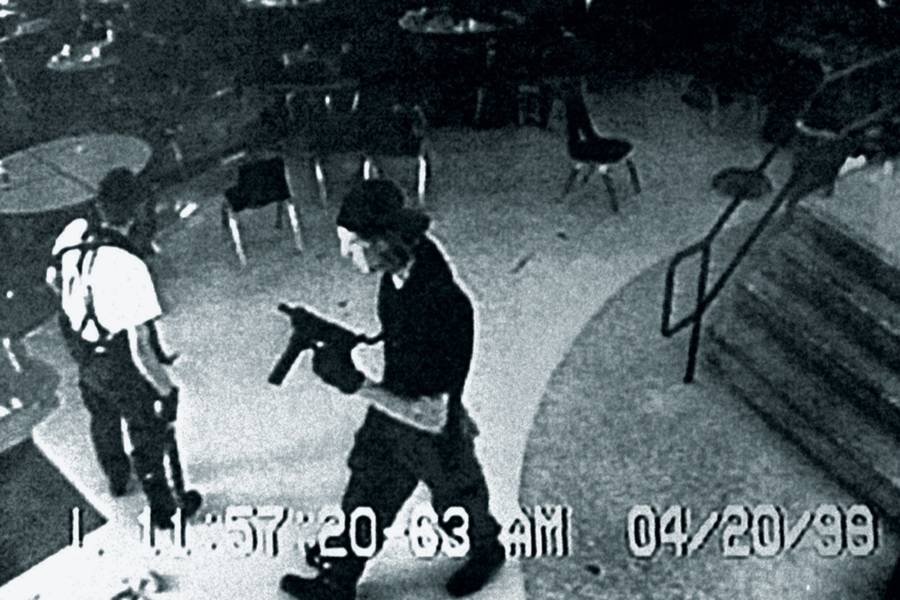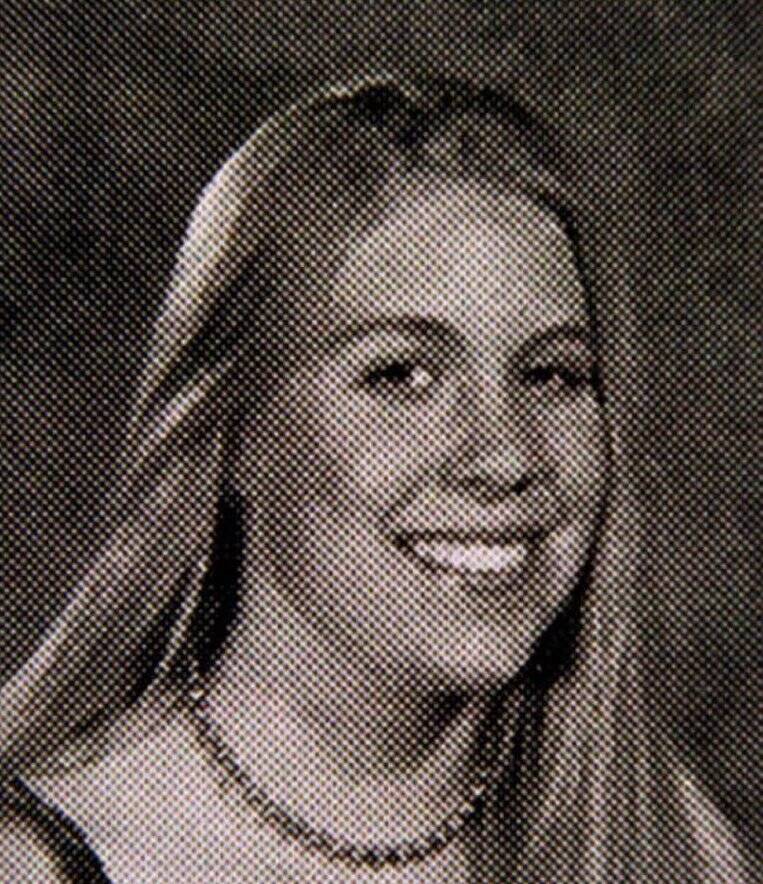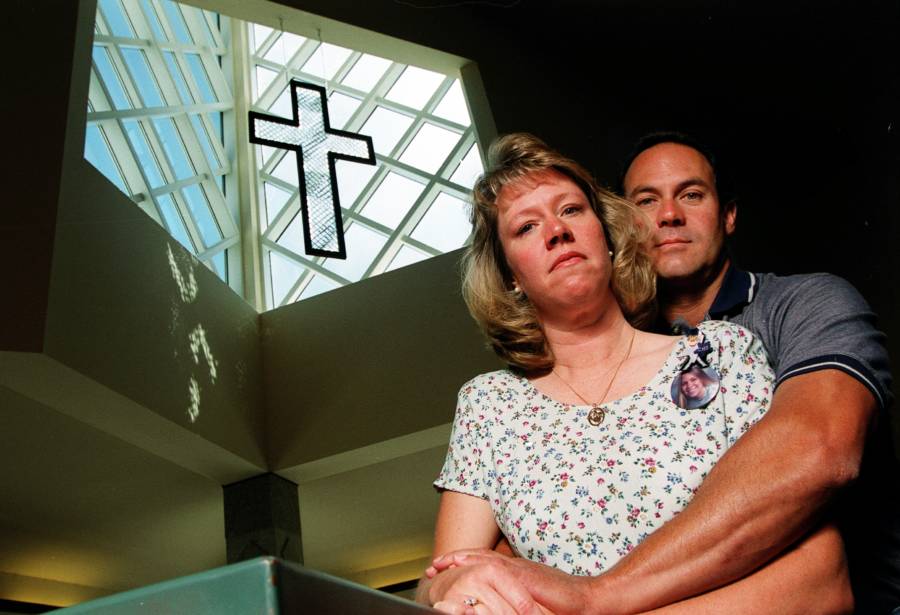Cassie Bernall was supposedly killed at Columbine for refusing to renounce God, but she had actually been mistaken for fellow student Valeen Schnurr.

Wikimedia CommonsAfter Cassie Bernall was killed during the Columbine shooting in Littleton, Colorado on April 20, 1999, false stories claimed she was shot due to her Christian faith.
The Columbine High School massacre of 1999 sent shockwaves across America and forced an entire nation to try to wrestle with unanswerable questions. How could two teenage boys commit such horrific acts of violence? Where did we go wrong?
The grieving country desperately tried to find answers, and for a while, found one in Cassie Bernall.
Cassie Bernall was 17 when Eric Harris and Dylan Klebold gunned her down during the massacre at Columbine High. The studious daughter of a religious mother, Misty Bernall, the young woman became a sort of martyr in the aftermath of the tragedy.
A student witness named Emily Wyant claimed that, during the massacre, Klebold asked Bernall if she believed in God. Even though it looked as though she might be able to save her own life if she denied her beliefs, she refused to renounce God, prompting Klebold to kill her.
So there it was: These troubled boys could at least be filed as “anti-religion” and we could all feel like we understood them to some degree.
In reality, however, Cassie Bernall was killed without any such prologue — which Wyant only finally revealed more than 10 years later. In the meantime, the myth gained so much traction that outlets like Salon and Rocky Mountain News as well as Misty Bernall’s book, She Said Yes: The Unlikely Martyrdom of Cassie Bernall captivated a nation.

Public DomainCassie Bernall was supposedly killed for refusing to renounce God, but she had actually been mistaken for fellow student Valeen Schnurr.
As is the case with any myth, however, there was a semblance of truth to the tale. A girl did get shot and did profess her religious faith to Dylan Klebold, but she didn’t die as a result. And her name wasn’t Cassie Bernall, it was Valeen Schnurr.
The Shootings Of Cassie Bernall And Valeen Schnurr

Wikimedia CommonsEric Harris and Dylan Klebold in the Columbine cafeteria during the shooting on April 20, 1999.
On April 20, 1999, Eric Harris and Dylan Klebold — two friends who bonded over violent video games, guns, and Nazi iconography — walked into Columbine High School prepared to immortalize themselves in the history books. Their plan was to kill more people than Timothy McVeigh did in the Oklahoma City bombing, and they too were planning to do so with explosives.
When the two 20-pound propane bombs failed to explode, however, Harris and Klebold had to reassess. They initially wanted to pick off students when the explosions forced panicked hordes to run into the parking lot, but this was no longer an option. Instead, the Columbine shooting, as we now know it, began to unfold.
The two students once again entered the school, and this time, officially commenced killing. Klebold eventually found his way into Cassie Bernall and Valeen Schnurr’s classroom. These two girls would eventually be confused for one another by a third student, and lead to one of the most factually incorrect yet widely recounted episodes of the Columbine shooting.

Columbine High School yearbook photoAlthough Christian media claimed that Columbine victim Cassie Bernall was killed for her faith, her story was conflated with that of classmate Valeen Schnurr.
Klebold eventually focused his indiscriminate shooting spree on Schnurr. He fired his shotgun at the girl, who then lay on the ground pleading for God as the shooter walked away. When he heard her crying for help, however, he returned.
“God?” Klebold asked her. “Do you believe in God?” According to Wyant, Valeen Schnurr hesitated for a brief moment before responding: “Yes. I believe in God.” Klebold asked her why, to which Schnurr plainly replied: “Because I believe. And my parents brought me up that way.”
The shooter reloaded as Valeen Schnurr attempted to crawl away. Miraculously, though she was bleeding out of 34 separate wounds, she pulled through and was transported to a local hospital for surgery following the massacre.
Valeen Schnurr lived to tell the tale, but a boy named Craig — in the adrenaline-fueled mayhem — confused Valeen Schnurr for Cassie Bernall. Bernall, unfortunately, had been hiding in the same room and died that afternoon.

Hyoung Chang/The Denver Post via Getty ImagesCassie’s brother, Chris, at the Columbine two-year anniversary at Clement Park, April 20, 2001.
Though Bernall was praying quietly for Klebold not to discover her, he eventually did. He poked his shotgun under the table — and said, “Peekaboo” — before he shot her in the head.
There was no moment of defiance, no storybook bravery that circulated in the media, and likely not even a moment for Bernall to realize what was about to happen when she was killed. The myth merely sprang up because a boy named Craig confused two girls in the middle of a school shooting.
The Myth Of Cassie Bernall’s “Martrydom” During The Columbine Massacre

Mark Leffingwell/Getty ImagesA pump action shotgun and assult rifle used in the shooting, on display at the Jefferson County Fairgrounds, Feb. 26, 2004.
The narratives that Cassie Bernall was either targeted for her religious devotion or that she died as a martyr by stoically remaining steadfast before being gunned down, which was also the narrative surrounding fellow victim Rachel Scott, wasn’t sinister in nature. The story was spread less for the sake of intentional Christian propaganda, though this was certainly a factor regarding Misty Bernall’s book.
In the end, Cassie Bernall’s mythologized sainthood was an act of unintentional, warranted desperation. The parents of Columbine students had just experienced one of the worst disasters in American history and tried strenuously to make sense of it. Parents, church leaders, and politicians alike all flocked to Cassie Bernall’s story of faithful defiance — with some employing it more opportunistically than others.

Craig F. Walker/The Denver Post via Getty ImagesBrad and Misty Bernall pose at West Bowles Community Church after an interview with The Denver Post. 1999.
Years later, when the truth of Cassie Bernall and Valeen Schnurr’s experiences had been corrected, devoted followers of the initial, false version of events still remained. For many, this heroic tale of standing up to bullying and nihilistic violence was simply more important than the facts — because it gave them the slightest semblance of reason or purpose.
In that sense, the sanctifying of Cassie Bernall’s actions, mistaken for Valeen Schnurr’s, made all the sense in the world.
After this look at Cassie Bernall and Valeen Schnurr, read up on the Trench Coat Mafia and other myths surrounding Columbine. Then, learn the story of Brenda Ann Spencer, the woman who shot up a school and said her reason was “I don’t like Mondays.”





